Frontend app
The frontend app in Open Self Service is a high-performance, modular application built with Next.js and designed to serve as the foundation for composable customer portals. It provides a ready-to-use structure, pre-configured features, and customizable pages to accelerate development and deliver seamless customer experiences.
Pages included in the app
The frontend app comes with pre-built pages to cover common customer portal functionalities. These pages can be extended or modified as needed.
The initial feature set of O2S was designed based on Gartner’s research on Customer Self-Service Capabilities: https://www.gartner.com/en/customer-service-support/topics/self-service-customer-service. This research outlines the core functionalities required for effective self-service solutions, as illustrated in the image below.
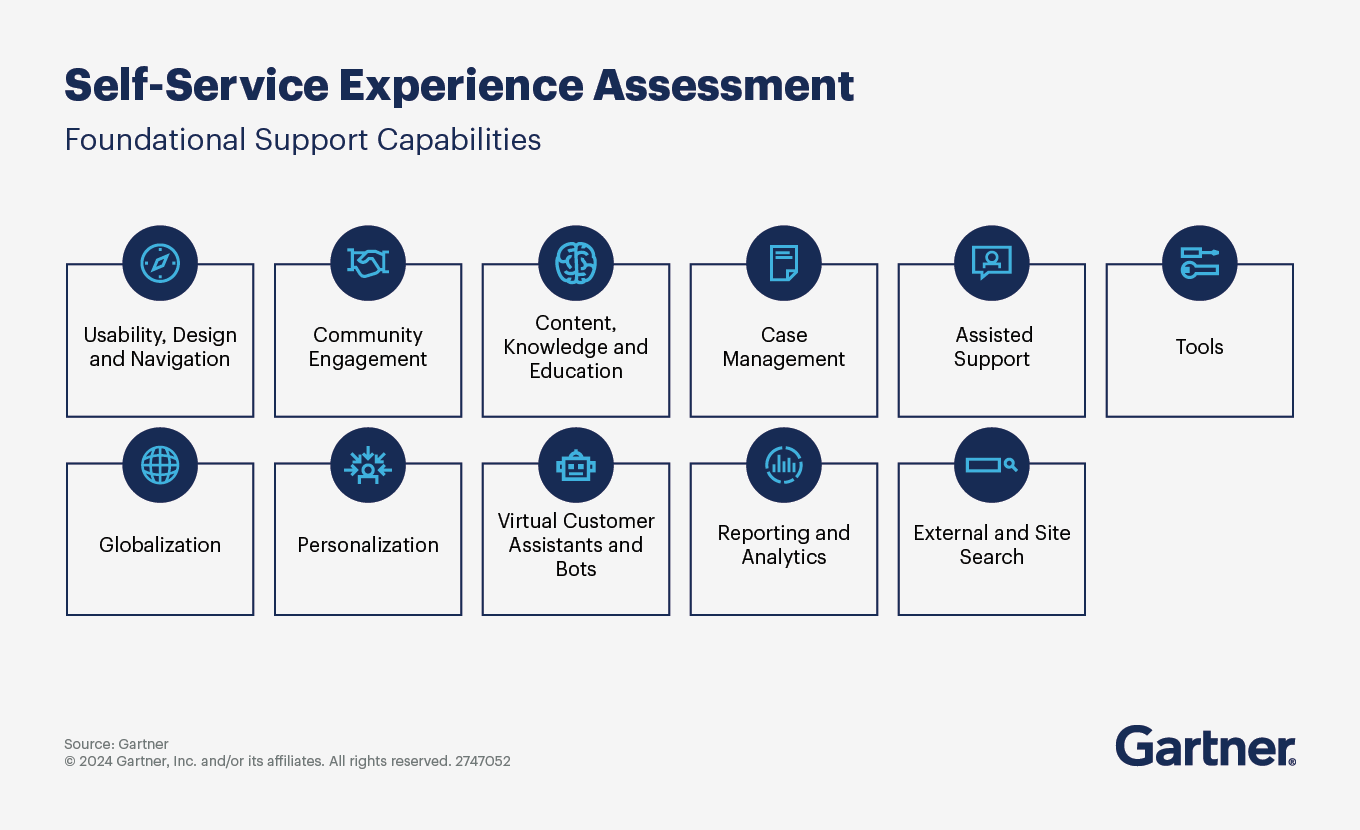
List of supported pages:
Login
A user authentication page integrated with Auth.js, supporting both email-based login and OAuth providers.
Advanced features like RBAC or SSO could be provided through additional integrations e.g. with Keycloak (contact us for details).
Dashboard
Provides a personalized overview of customer-specific data, such as services, payments, notifications, or quick links to other portal features.
User's context switcher
The context switcher feature allows users to seamlessly switch between multiple organizations or accounts configured under a single user. This is especially useful in multi-organization setups, such as B2B scenarios, where users need to manage data for different entities.
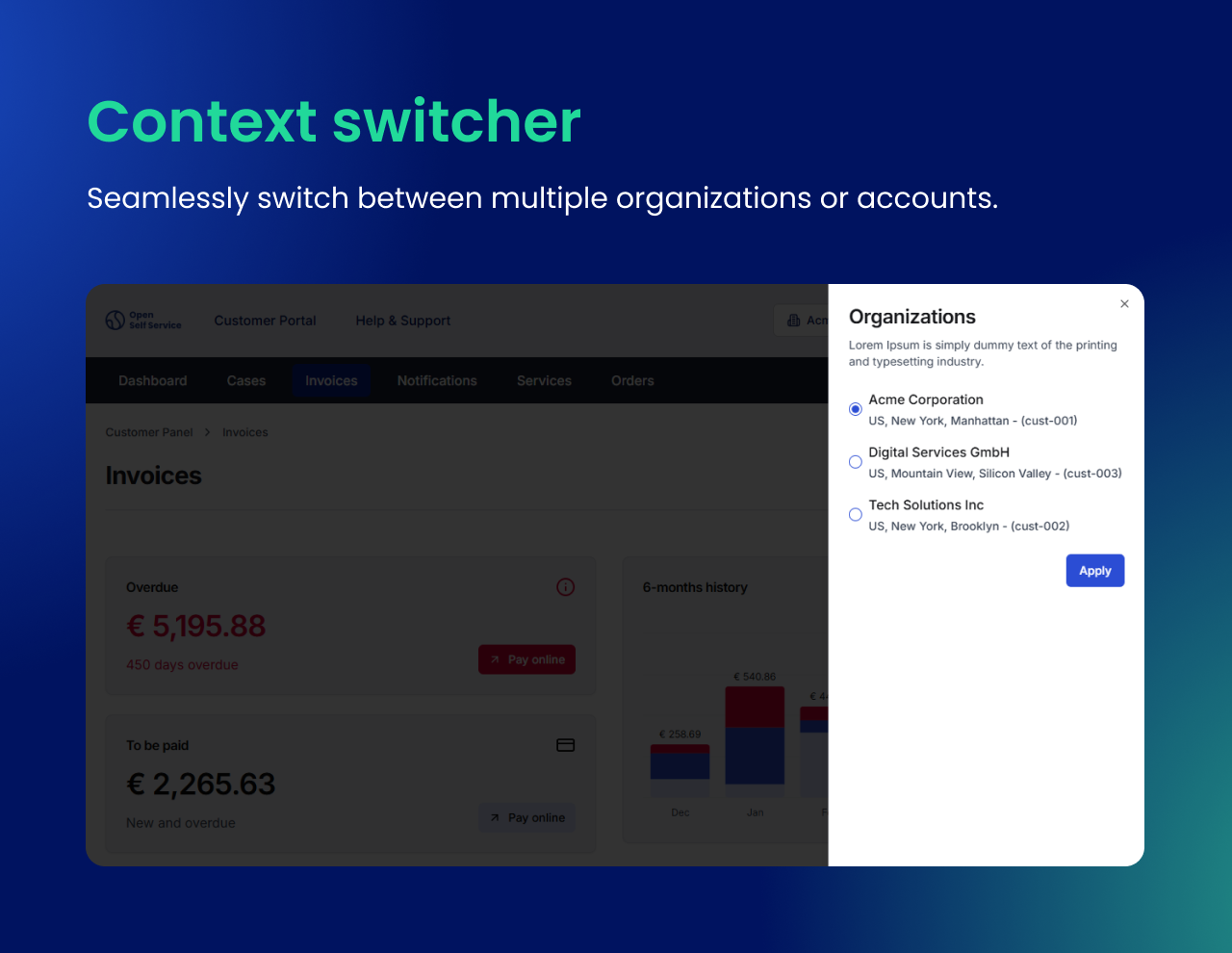
Cases / Tickets
Enables users to browse, create, view, and manage support tickets or service requests.
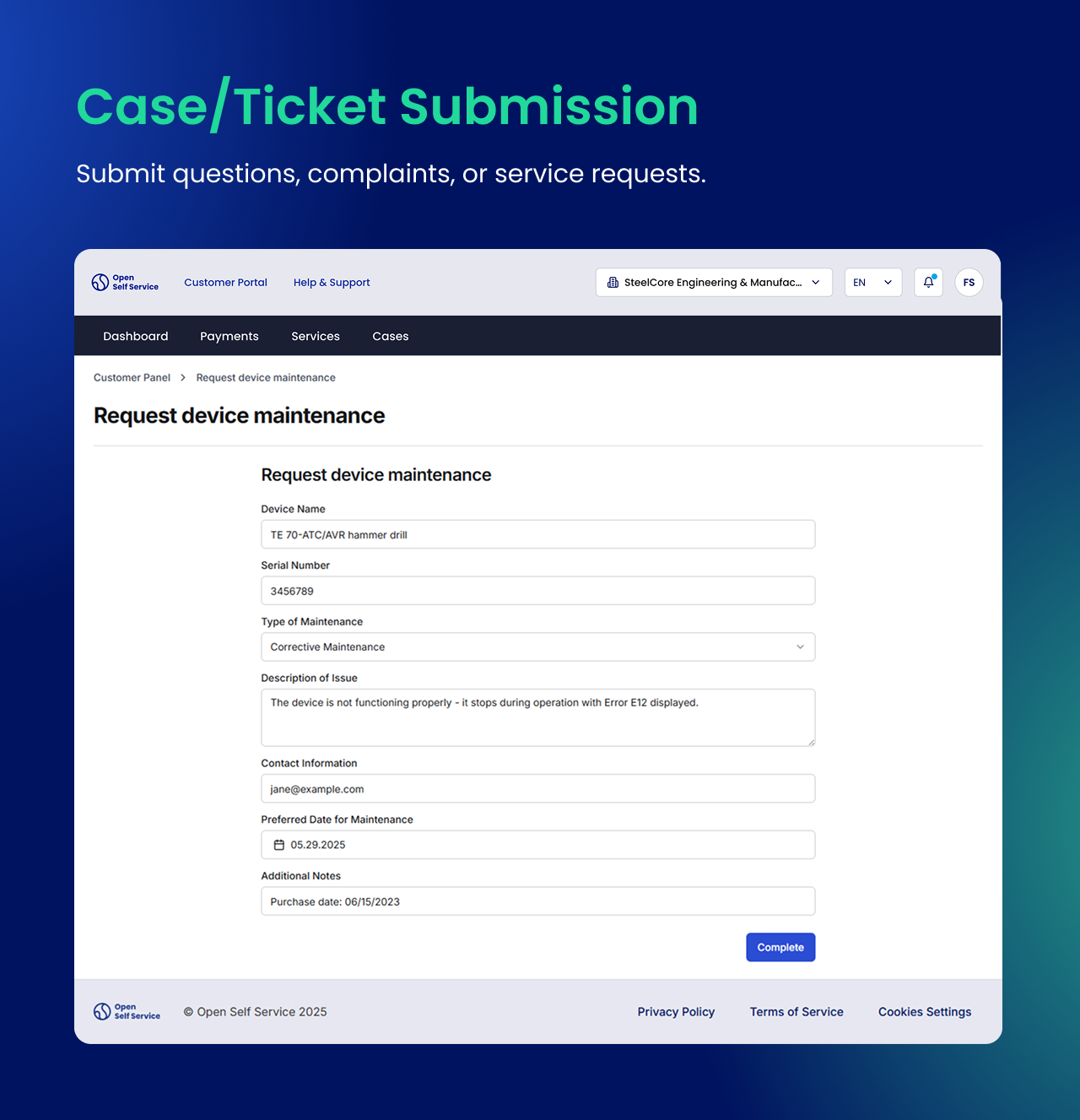
Payments
Displays payment history, pending invoices, and transaction details, with potential integration to payment APIs or billing systems.
Notifications
A page to display user-specific notifications, such as updates on tickets, services, or system alerts.
Services and products
Showcases a list of customer-specific services or products with detailed views. These pages can also integrate with APIs for service configuration or updates.
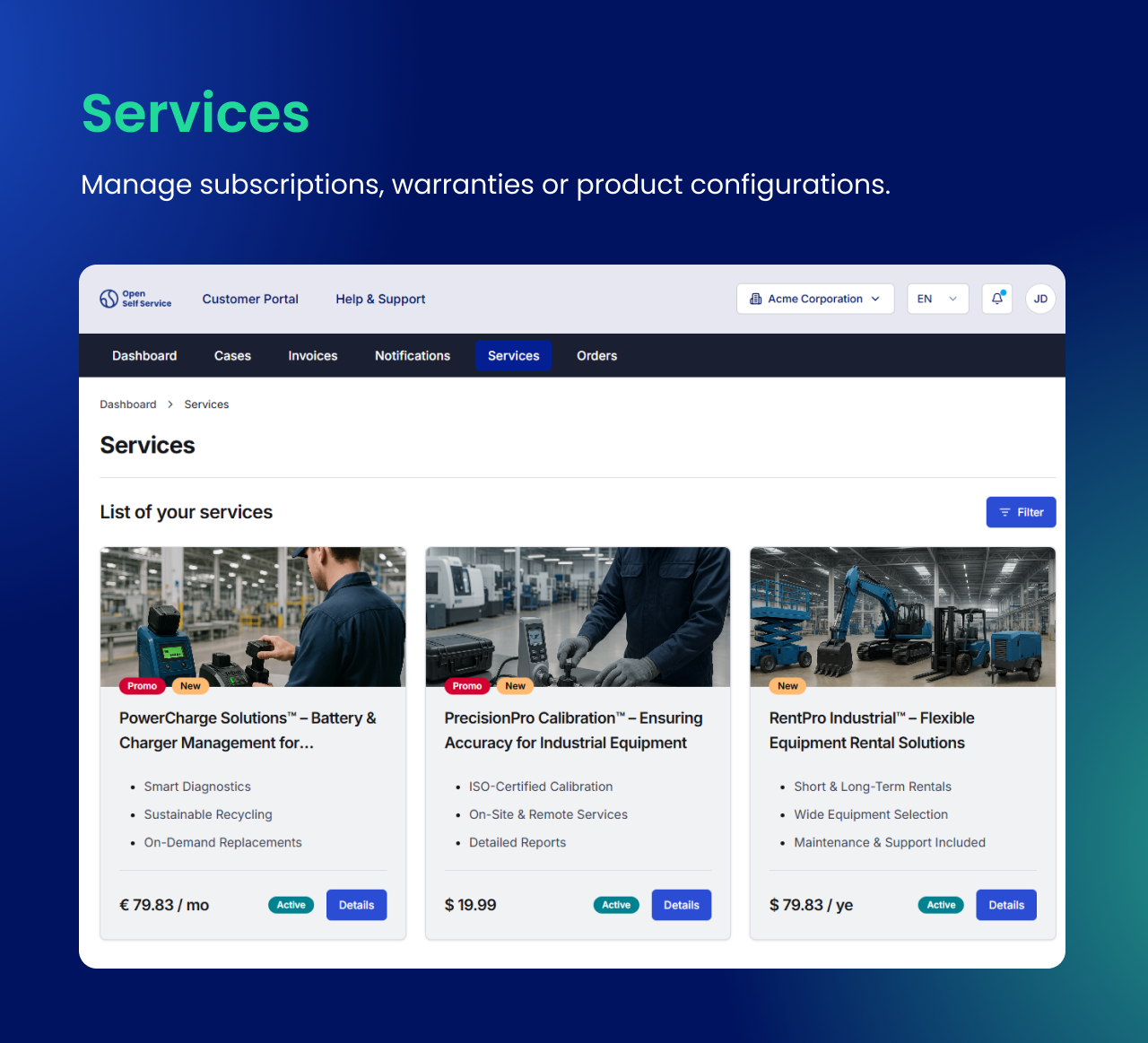
Customer's orders pages
Users can also see and manage their orders (returned from an ERP or e-commerce).
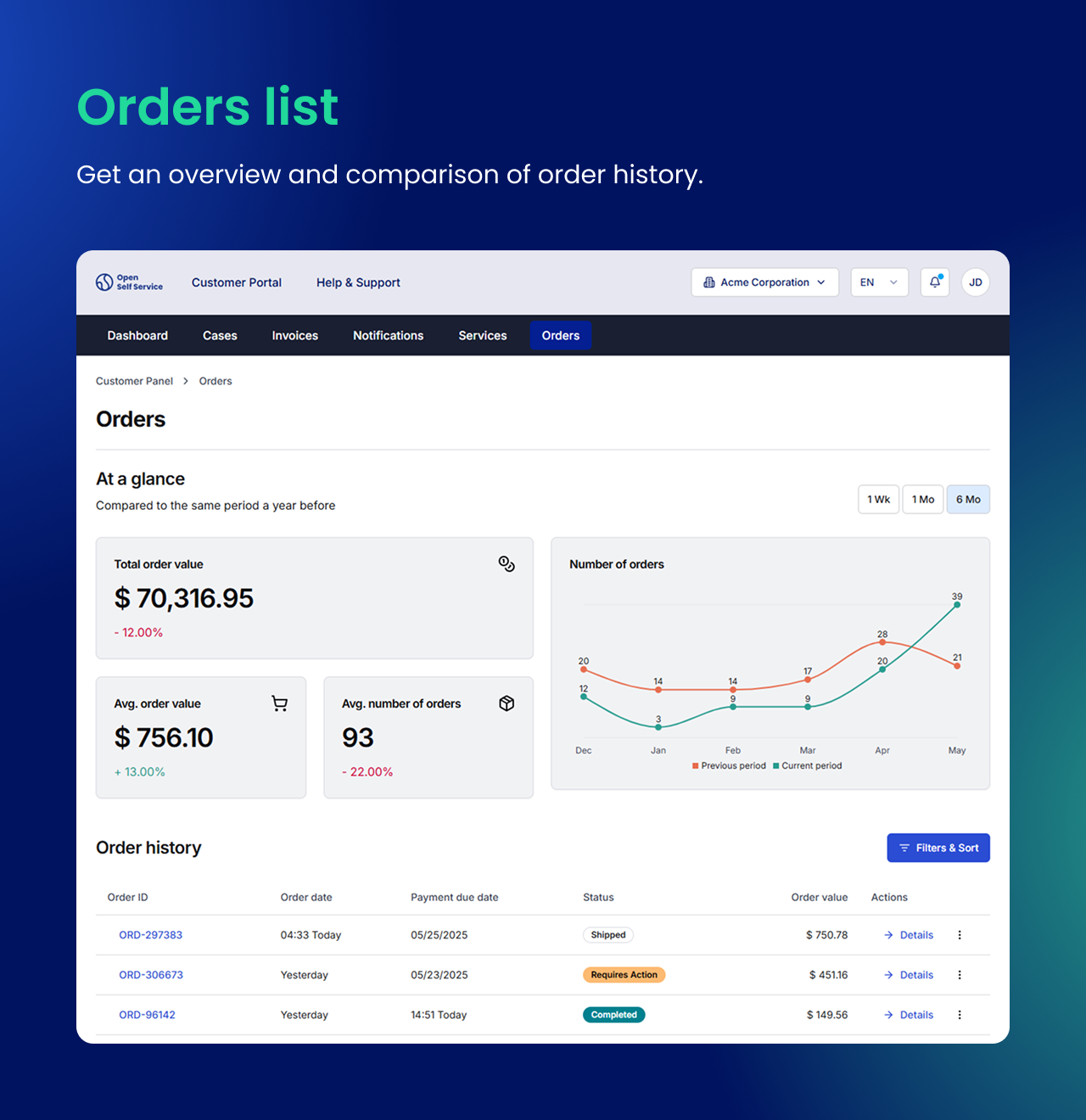
Knowledge base
A searchable help center powered by a CMS, enabling customers to find answers to their questions or browse categories.
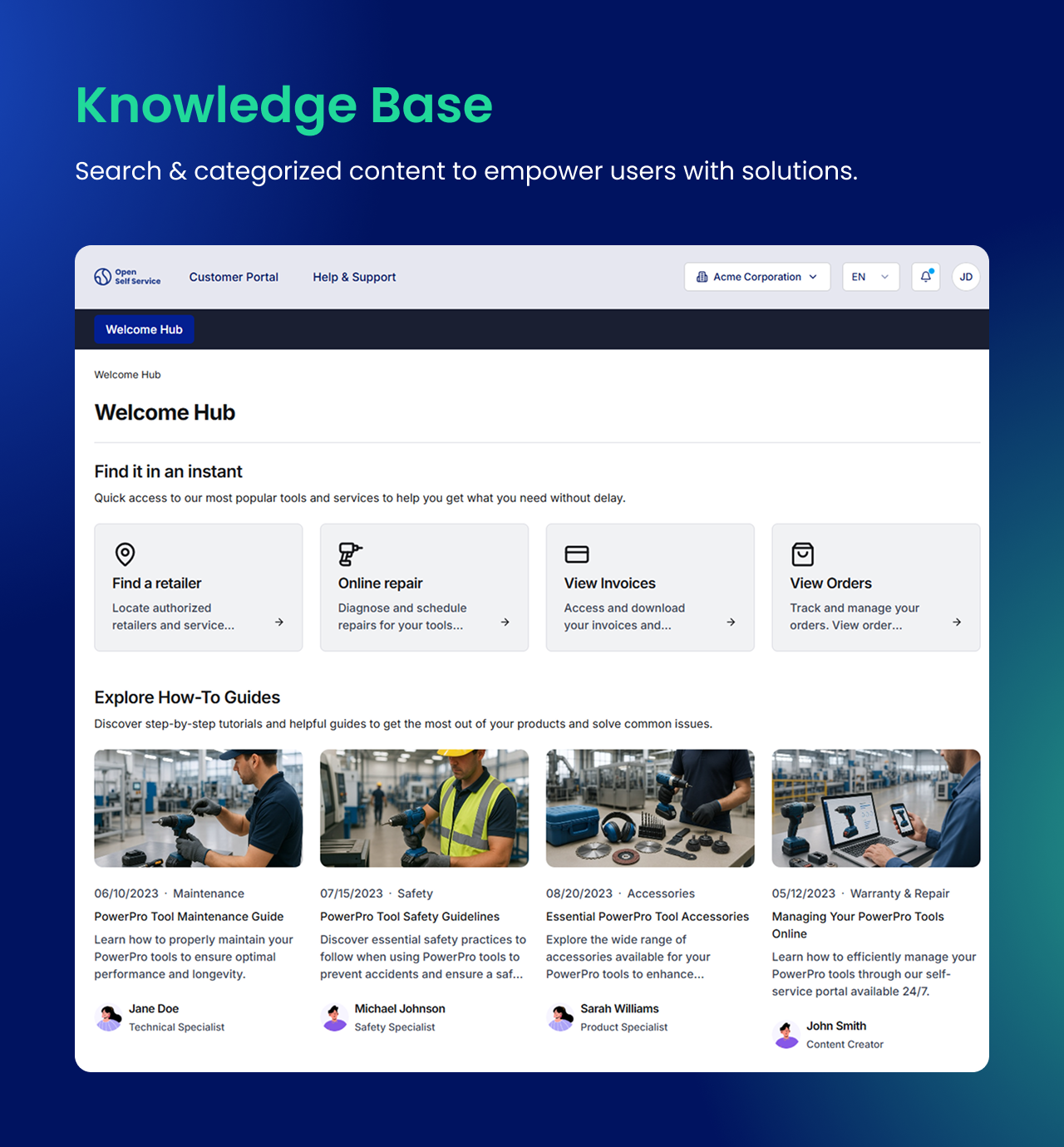
Navigation and footer
Pre-configured navigation menus and footer components, easily managed via the CMS for updates and custom links.
User account (basic implementation)
Allows users to manage their profile information, including account settings, password updates, and preferences.
Features and benefits
Customizable
The frontend app is a regular Next.js application, built with shadcn/ui and Tailwind CSS, making it easy to extend and customize its UI for your specific needs. All standard Next.js features are supported.
Headless CMS integration
All pages and components can be managed via a headless CMS, such as Strapi or Contentful, enabling non-technical users to update content effortlessly.
Built-in responsiveness
The app is fully responsive, ensuring a consistent user experience across devices, from desktop to mobile.
Authentication
The frontend app includes integration with NextAuth for user authentication, supporting multiple providers (e.g., Google, GitHub) out of the box.
API-first approach
Communicate with the backend using the SDK to fetch harmonized data from the API Harmonization server, keeping the frontend decoupled and future-proof.